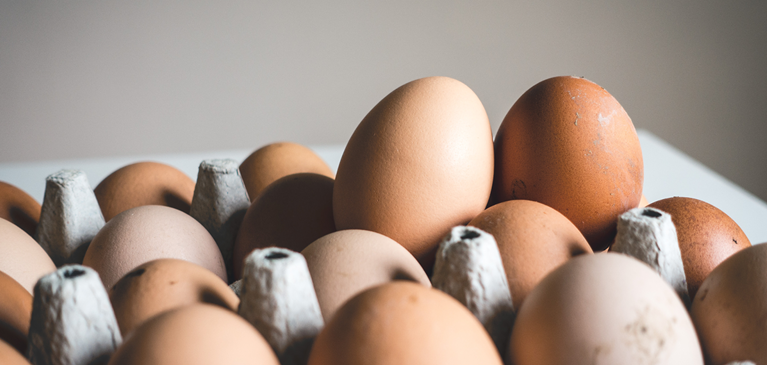
Late in 2023, another uptick in Highly Pathogenic Avian Influenza (HPAI) cut into national egg production in the country, which equates to a slight uptick in prices at the retail level for consumers.
For producers not affected by the virus, it also means a higher price, as supply to meet the demand continues to be unpredictable.
However, producers are facing increasing inflation, pushing the price of production – energy, labor, inputs, and fuel for trucking.
In Michigan, the seventh largest egg producing state in the country, growers are also grappling with the additional cost of converting Michigan egg laying hen houses to cage free by the legislatively imposed deadline of 2025.
To insulate pricing, some growers are going to a different marketing strategy. “Because everything costs more, some producers who used to sell on the open market are going more to a contract market called cost-plus to help minimize the swings in prices,” says Brandon Leep, GreenStone VP of Agribusiness Lending.
As HPAI spread across the country in 2022 and early 2023 – the deadliest outbreak of avian flu in U.S. history – retail egg prices drastically increased, reaching a peak of $4.82 in January 2023 before falling to $2.14 in November, according to the latest Consumer Price Index data.
In early 2024, retail prices have started to inch back up as the market responds to more HPAI-infected operations, which must follow strict depopulation and disinfection regulations before repopulating with birds.
The virus is generally carried by wild birds and is highly contagious. It’s also extremely lethal; it kills 90% to 100% of chickens, often within 48 hours, according to the CDC.
USDA Animal and Plant Health Inspection Service’s data on the HPAI outbreak indicates 5.1 million table-egg laying hens were destroyed in November. An additional 7.8 million laying hens were destroyed in December, making the total losses for the two months 12.9 million birds. Since the outbreak in 2022, 81.7 million birds have been destroyed.
In 2024, the losses of both table-egg layers and table-egg layer pullets are expected to impact production in the first half of the year. Production, according to USDA, is adjusted down by 25 million dozen in each of the first two quarters, and by 10 million dozen in the third, for an annual total of 8,020 million dozen.
Moreover, USDA Animal & Plant Health Inspection Service data also show that 2.5 million commercial table egg pullets (laying hens which have not yet entered the productive flock) were lost to HPAI between December 27th and January 4th. These losses add uncertainty to the near-term recovery of the flock.
Michigan and Wisconsin
Michigan, a net exporter of eggs, has not had any commercial egg laying operations test positive for HPAI. However, it has impacted had three commercial turkey operations.
Michigan had its first commercial operation test positive on May 10, 2022, with 35,100 turkeys.
Michigan went a year and half with no commercial operations testing positive up until December 2023. Two additional commercial turkey operations, both in Muskegon County, tested positive on Dec. 19 with 47,900 birds, and Dec. 27 with 31,500 birds. In total, from the first backyard outbreak in Feb. 23, 2022, Michigan has had 28 outbreaks accounting for 117,900 birds.
Michigan’s egg industry is growing despite the challenges, according to Nancy Barr, executive director at Michigan Allied Poultry Industries.
“Our producers are spending a lot of money for a super high level of biosecurity,” she says. “When you look at a wildlife map of birds that are positive in Michigan, we have a ton. I credit our producers for their biosecurity efforts to keep this disease out, for the most part.”
The concern right now, which she describes as the quiet time, is the next wave of wild birds that will soon start migrating back north to places like Michigan and Wisconsin from their southern habitats. “That’s when we tend to see more cases again,” she adds. “It appears to be endemic in some wildlife populations now, but what influenza will do this spring is difficult to predict.”
As Michigan eggs continue to go across the country, the future looks good, she says. “Michigan producers are pro-active with bird welfare and are constantly looking forward to more sustainable practices – they are really at the cutting edge in the work they do and the standards they hold. We have a strong market and will continue to grow.”
Barr reminds consumers that even if egg prices rise in the next couple months, “It’s still as fantastic whole protein food – the cheapest protein by volume you can buy,” she says. “And eggs are now proclaimed to be part of a Heart Healthy diet by the American Heart Association.”


